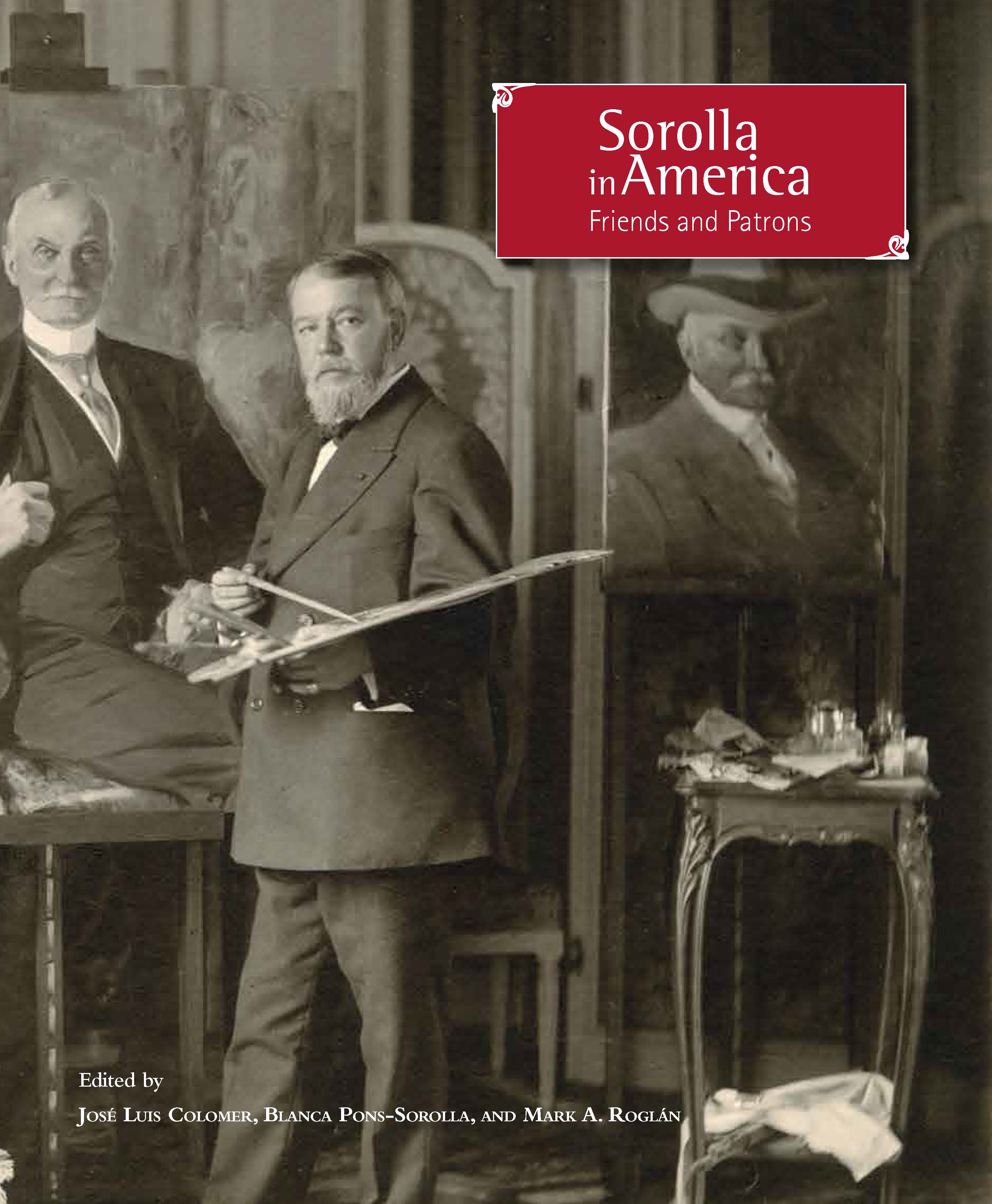Author
José Luis Colomer, Blanca Pons-Sorolla, Mark A. Roglán (eds.)
Characteristics
408 pages; 350 color illustrations; hardcover with jacket; 24,5 x 29,5 cm
Publication
English; published by Meadows Museum with the CSA and Fundación Museo Sorolla with the collaboration of CEEH; 2015
ISBN
978-84-15245-46-9
Price
€57,70
Joaquín Sorolla y Bastida (1863–1923) enjoyed widespread fame in America’s Gilded Age, when museums contended to host his solo exhibitions in 1909 and 1911, and the purchase of his paintings was a matter of pride for public and private collections. This volume studies the web of personal relationships that underlay this collective fascination for Sorolla, the most admired Spanish artist outside Spain in the early twentieth century.
Several types of figures played a significant part in this success story: Sorolla’s first buyers in the United States, who introduced the Spanish artist to America by displaying their purchases in public view; the directors of the nascent art museums of St. Louis, Buffalo, and Chicago, who organized the blockbuster Sorolla exhibitions and the social events related to the artist’s presence in these cities; key collectors and supporters, such as Archer M. Huntington—who not only hosted Sorolla’s legendary New York exhibition at the Hispanic Society, but also bore the main expenses of his triumphant American tour—, and Thomas Fortune Ryan, his second greatest fan in America, who owned at least 29 paintings by the Spanish master. Another group of characters in our story is made up of American artists with whom Sorolla enjoyed personal and professional relationships: mentors or colleagues such as John Singer Sargent and William Merritt Chase; beginners like Cadwallader L. Washburn and William E.B. Starkweather, who had studied with him at his Madrid studio; Louis Comfort Tiffany sat for Sorolla in 1911, when he was at the pinnacle of his remarkable career as a designer; Raimundo de Madrazo, Sorolla’s predecessor as a portraitist of American High Society in the 1890s.
The group of people featured in this book accounts for a considerable part of the commissions Sorolla worked on in several American cities, as well as the sale of the vast majority of works he brought with him from Spain. The subsequent circulation of these works and the changing appreciation for Sorolla throughout more than a century are examined in the culminating essay: a retrospective study of Sorolla’s fortunes in the art market, which is ultimately a gauge of his international success.
JOSÉ LUIS COLOMER holds a doctorate in comparative literature from the Colegio de España in Bologna and a degree in the history of art from the Sorbonne. He collaborates with various North American institutions through the Center for Spain in America (CSA), which promotes public awareness of Spanish art and culture in the U.S. In 2012 he coedited with Inge Reist Collecting Spanish Art: Spain’s Golden Age and America’s Gilded Age, a volume published by CSA and the Frick Collection, in which an international group of scholars explores the formation of the taste for Spanish art among some of America’s greatest art collectors.
BLANCA PONS-SOROLLA, great-granddaughter of Joaquín Sorolla y Bastida, is an independent researcher of the artist’s oeuvre and the author of his most comprehensive biography. While working on the catalogue raisonné of Sorolla’s paintings, she has co-curated numerous exhibitions held in Spain and in several other countries. In 1992 she was decorated by His Majesty King Carl XVI Gustav of Sweden for her work on Sorolla. In 2009 she received the Sorolla Medal from The Hispanic Society of America (New York) for her research career devoted the painter’s life and oeuvre.
MARK A. ROGLÁN (1971–2021) was the Director of the Meadows Museum and Centennial Chair in the Meadows School of the Arts at Southern Methodist University. He contributed to many publications in the field of nineteenth- and twentieth-century Spanish art, and curated important exhibitions. Prior to his tenure in Dallas he worked as a curatorial fellow and a research associate in the Museo del Prado and served as assistant with the Fogg Museum at Harvard University. Among other distinctions and awards, he held the Encomienda de la Orden de Isabel la Católica, a knighthood sanctioned by King Juan Carlos I for his contributions to Spanish art.

